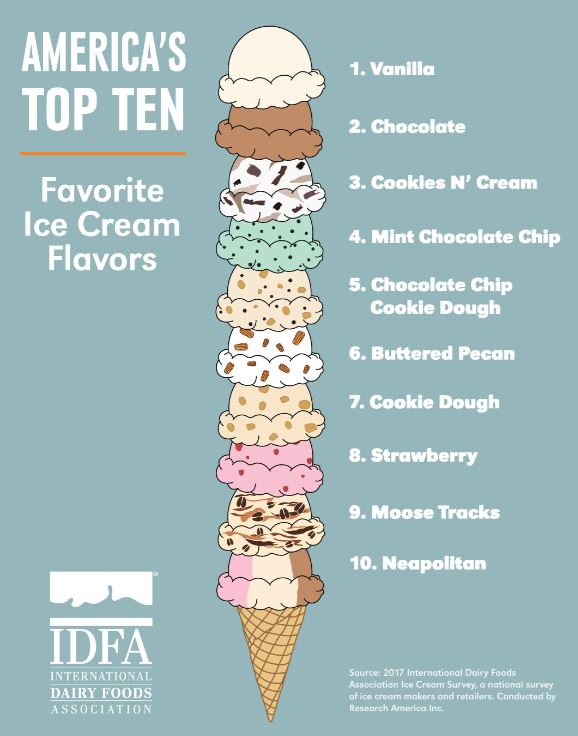Ice cream science
Data: 1.09.2018 / Rating: 4.8 / Views: 612Gallery of Video:
Gallery of Images:
Ice cream science
Learn the ins and outs of ice cream manufacturing as knowledgeable instructors take you from Cow to Cone at the annual Penn State Ice Cream Short Course. Yes, it sounds dangerous and the potential for messes seems highly likely, but youll be surprised at the good, clean fun youll enjoy with your students when you make ice cream. Why do you need salt to make ice cream? This red wine ice cream recipe has a rich red grape flavour that is comparable to the flavour profile of chocolate ice cream. The recipe will be split into three sections: SECTION 1: T he Science of Ice Cream Making and Preparation Tips; SECTION 2: Full Recipe; and SECTION 3: QuickRead Recipe. Please click here to read SECTION 1: The Science of Ice Cream Making and Preparation Tips. This volume is an allinclusive guide to the meaning and utility of hundreds of technical terms, concepts and approaches needed to manufacture quality ice cream and other frozen desserts. Ice cream is both a colloid (a type of emulsion), and a foam. An emulsion is formed when the milk and cream are dispersed in the water and ice with the emulsifying agent usually being egg yolk, although commercial brand ice creams may use other agents (e. The foam is formed as a result of air in the ice cream not mixing with the other substances. Whether it's for a class, your whole school or just a scout troop. We want to bring the joy of science back to the youth. Education Most commercial ice creams contain things like guar gum, locust bean gum, carrageenan, xanthan gum, polysorbate 80, monoglycerides, and diglycerides. What are these scarysounding things, and why are they in our ice cream? In the ice cream business, these are. Ice cream (derived from earlier iced cream or cream ice) is a sweetened frozen food typically eaten as a snack or dessert. It is usually made from dairy products, such as milk and cream, and often combined with fruits or other ingredients and flavors. It is typically sweetened with sugar or sugar flavourings and colourings are added in addition to stabilizers. Freezedried ice cream is ice cream that has had most of the water removed from it by a freezedrying process, sealed in a pouch, and requires no refrigeration. It is also known as astronaut ice cream or space ice cream, typically a slab of readytoeat dehydrated ice cream. Compared to regular ice cream, it can be kept at room temperature without melting and is more brittle and rigid but. I like to read about food science and I really like to make ice cream. This book is a great combination of those interests. The book is easy to read and has many nice diagrams to illustrate the concepts. Turn Your TShirt Into an Ice Cream Machine! Learn how to make your own ice cream! Invent colors and flavors, conduct super cool chemistry experiments, investigate why salt is used in ice cream making and learn how to make ice cream smooth or gritty and how to add fluff to the mixture. Science Stars: 1st Grade Lesson Plan States of Matter: Making Ice Cream Standards: 1. Students know solids, liquids, and gases have different properties. Students know the properties of substances can change when the substances are mixed, cooled, or heated. Suggested time allotment: 45 minutes Brain freeze is also known as ice cream headache, cold stimulus headache, and sphenopalatine ganglioneuralgia. It is a shortterm headache typically linked to the rapid consumption of ice cream. When you mix the ice cream base together, the fat clusters start to break apart. As you mix, you also introduce air, and the recently disturbed fat clusters keep the air pockets in place. When the air pockets are more stable, you get a smoother ice cream. The particular science of freezing ice cream. With advanced refrigeration techniques and modern ice cream machines, it is interesting to contemplate that humans have been making ice creams for hundreds of years. A blog for home cooks that contains recipes, techniques, science, and ice cream maker reviews. Emphasising science and natural ingredients to make exceptionally smooth and creamy ice cream. Annual short course December 3 to 7, 2018. Instructor Professor Douglas Goff Held since 1914, the annual Ice Cream Technology Course is the only one of its kind in Canada. Registration is limited due to the handson nature of the program. This intensive weeklong course provides participants with knowledge of the ingredients, processing and quality features of ice cream. For more than 100 years and five generations, our family owned bakery has made a wide variety of fresh products. Throughout the decades, customers have enjoyed our delicious cake. In 7th grade we presented our science project, Whats the Most Amazingly Awesome School Lunch Ever? The answer (a pint of Lunchbox) was so shocking it remained a secret. Until now: strawberry ice cream stuffed with strawberryfilled
Related Images:
- Doctor who french
- Miss you like crazy
- Hand of God
- Fifa 14 apk obb
- The eagles hotel california
- Best of the best 2
- 7 days in havana
- Guns n roses chin
- The league s04
- 11 11 11 ita
- Coffee and cream passion
- Sniper ghost warrior 2 trainer
- Ex gf avi
- Hindi student of the year
- Where we are
- COLIN MCRAE RALLY REMASTERED
- Convert to blu ray
- Alondra de la parra
- Cant stop playing
- The spirit of the liturgy
- Tamil movies 2013
- Wiz khalifa snoop dogg
- Leandro carvalho brazil butt
- Anti mortem new southern
- After hours 2
- Friends with bett
- Digital playground fighter
- Flappy bird clone
- Interviewing users interviewing users
- Youre All Surrounded
- Activator for vista
- Wheeler dealers trading up
- 16 2008
- Goal 2 spa
- Hotline miami mac
- Super mario bros wii
- The voice s05e01
- Height of desire
- Keys for eset nod32
- The Temptation of Eve
- Tongue In Cheek
- Postal service such great heights
- Dale earnhardt jr jr the speed of things
- Asphalt urban gt 2
- Adobe after effects cs3 professional 2008 pc crack
- Life as we know it felony
- State of War
- School of motion
- Magic magic 2013
- The acid house
- Black box s01e04
- Stay out of the basement
- O ceu de verdade
- Video watermark pro
- WINDOWS XP SWEET
- Magic in the Moonlight 2014
- Dark sector pc
- The walking dead s04e04
- A hundred million suns
- Alice and chain
- The grand
- The grateful dead
- Ice cream science
- Full metal jacket ost
- Mnm big hits best of
- The Indian Doctor s01
- Soul eater complete sub
- 3 bodas de mas
- Just give a reason
- Hard Rock Zombies
- Jan feb 2014 playboy
- Bhag milkha bhag
- Up and Running with
- I follow rivers
- The glorious dead
- Kis the girl
- Video sexy mpg
- Daily show 01 07 2014
- A state of trance 596
- The Final Riot
- Classic Sports Car
- Va hip hop 2012
- Iggy Azalea Glory
- Written on the wind
- Red hot jam 236
- Defense grid 2
- All mine to give
- Dvdrip x264 ac3
- Win 8 activ
- Four of the apocalypse
- NEW XXX 2014
- Windows 10 technical preview x86
- Ice cream telugu
- Happy new year songs
- Dvd screener 2012
- The Final Riot
- Basket manager pc











